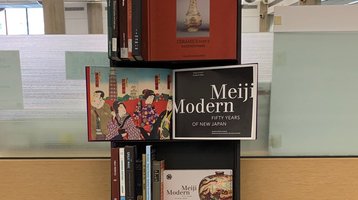Influence of the U.S. Constitution abroad
Today, September 17, is Constitution Day. On this day in 1787, in Philadelphia, Pennsylvania, 39 delegates to the Constitutional Convention signed the Constitution of the United States, which went into effect on March 4, 1789. According to Professor Tom Ginsburg (below), many consider it to be the first national written constitution. The American Constitution served as a model for other nations drafting new constitutions, especially countries in early 19th century Latin America. Constitution-drafters around the world borrowed the idea of a written constitution. Some non-U.S. constitutions include similar provisions for a Presidential system of government, for the right to bear arms, and for the prevention of quartering of soldiers during wartime. Foreign countries have also adopted U.S. constitutional ideas of federalism and separation of powers. A recent review of modern constitutions determined that the growing dissimilarity between their provisions and those of the U.S. Constitution demonstrates the declining influence of the U.S. Constitution. Nevertheless, the U.S. Constitution influenced the constitutions countries such as Japan and India, and its influence, even in decline, continues worldwide.
Additional Readings & Resources:
Tom Ginsburg & Rosalind Dixon, Comparative Constitutional Law: Introduction, The University of Chicago Law School, Public Law and Legal Theory Paper Series, No. 362 (September 2011). See published book, Comparative Constitutional Law (E. Elgar, 2011).
José Antonio Cheibub, Zachary Elkins, & Tom Ginsburg, Latin American Presidentialism in Comparative and Historical Perspective, The University of Chicago Law School, Public Law and Legal Theory Paper Series, No. 361 (September 2011).
Constitution Day and Citizenship Day (Law Library of Congress, September 14, 2011).
David S. Law & Mila Versteeg, The Declining Influence of the U.S. Constitution, (September 10, 2011). Washington University in St. Louis Legal Studies Research Paper, Forthcoming; Virginia Public Law and Legal Theory Research Paper, Forthcoming. Available at SSRN: http://ssrn.com/abstract=1923556
Benedikt Goderis & Mila Versteeg, The Transnational Origins of Constitutions: An Empirical Investigation (August 8, 2011). Available at SSRN: http://ssrn.com/abstract=1906707
Congress Reads the Constitution (TCCTV/C-SPAN, January 2011).
George Athan Billias, American Constitutionalism Heard Around the World, 1776-1989: A Global Perspective (2009).
Suijit Choudry ed., The Migration of Constitutional Ideas (2006).
David Currie Reads the U.S. Constitution (University of Chicago Law School/WHKP, University of Chicago, 2006).
Frederick Schauer, On the Migration of Constitutional Ideas, 37 CONN. L. REV. 907 (2005).
Philip B. Kurland & Ralph Lerner, eds., The Founders’ Constitution (University of Chicago Press & Liberty Fund 2000 Web Edition).
Heinz Klug, Model and Anti-Model: The United States Constitution and the “Rise of World Constitutionalism”, 2000 WIS. L. REV. 597.
Louis Henkin & Albert J. Rosenthal eds., Constitutionalism and Rights: The Influence of the United States Constitution Abroad (1990)(includes bibliographical essay).
Albert P. Blaustein, The Influence of the United States Constitution Abroad, 12 OKLA. CITY U. L. REV. 435 (1987).


